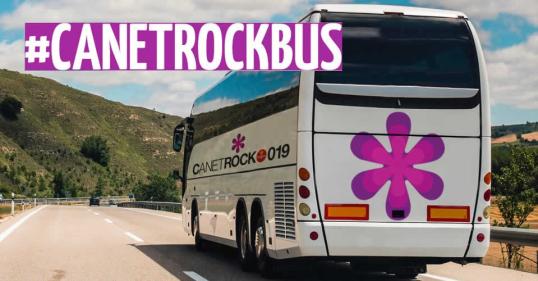- Topic
- Collective passenger transport
- Country
- Spain
- Resource type
- Case study
First published on 24 March 2021.
Young people living on the outskirts of Barcelona in Spain suffer from a lack of reliable bus services. This prevents many of them from accessing educational and recreational activities, such as concerts, cultural events and festivals.
For that reason, BusUp, a start-up company that offers on-demand transport services, and MOSAIC, a company specialising in mobility data analysis, set out to find novel ways of developing a transport service that is more affordable and sustainable than a car.
As part of the Barcelona Pilot Lab, one of six pilot labs across Europe that are part of the EU-funded INCLUSION project, BusUp and MOSAIC explored the use of innovative data analysis tools to process social network data and reorganise the transport offering for the annual Canet Rock festival in a bid to improve its accessibility for young people.
Context
The Barcelona Pilot Lab was concerned with regular commuters (representing 74% of total trips in the area) and leisure travellers (individuals or small groups travelling to a common destination for public events such as concerts, festivals and football matches).
As part of the Sustainable Urban Mobility Plan (SUMP) process, cities aim to develop Mobility Management Plans (MMP). These bring together a package of measures that will help to reduce the demand for travel and are tailored to the needs of a location or activity, which would otherwise generate significant travel demand.
For tourist sites and non-regular, large-scale events, producing these MMPs is difficult as demand is continuously changing. Moreover, providing tailored public transport services is challenging because the location of the transport demand is not always known in advance.
Canet de Mar and its surroundings, the area on which the INCLUSION pilot focused, is host to one of the most attended music festivals in Catalonia, Canet Rock, an event attracting thousands of people every summer.
To identify and quantify the real transport demand, BusUp(link is external) and MOSAIC(link is external) explored the possibility of collecting data from social networks to improve their offer of flexible bus services for young people wishing to attend Canet Rock.
In action
The target user groups identified for the pilot lab were young people, teenagers and people with no access to their own mobility solutions.
To have an indication of the real transport demand related to the target user groups, BusUp and MOSAIC analysed social media data on ‘conversations’ relating to the event site.
By processing data from activity on social networks, they found that some segments of the target group indeed shared the same mobility interests. Using this information, they were able to reorganise the transport offer dynamically and assess the level of acceptance of more flexible transport solutions to the Canet Rock festival.
A digital and social communication strategy was also defined to ensure as wide an outreach of the new flexible service as possible on the web and social media.
Results
The pilot lab showed that integrating social media data with the known transport, demographic and geographic characteristics of an area was able to contribute to the development of targeted transport options for a major music festival.
As a result of the social network data analysis conducted on Twitter, 11 new BusUp routes were established, which attracted enough bookings to make the service commercially viable.
The new bus routes provided improved access to the Canet Rock festival for around 450 new users (a 37% increase compared to the previous year).
Interestingly, while 42% of BusUp users were under 18, only 10% of non BusUp users were under 18, suggesting that the BusUp service contributed to making the Canet Rock festival more accessible to those under 18.
The BusUp service was also very popular with female festival goers (in total, 84% of BusUp users were female compared with 49% of non BusUp users) and younger festival goers (78% of BusUp users were under 24 compared with 67% of non BusUp users).
It is notable that 60% of BusUp users who had previously attended the Canet Rock festival, had travelled by car.
Challenges, opportunities and transferability
As the pilot lab conducted as part of INCLUSION relied on the analysis of social media activity, this approach may not be suitable in areas where levels of social media activity are very low.
This approach may be replicated if these three conditions are met:
- there is a one-off or irregular large-scale travel demand generator, such as an event where the number of attendees is changing or not known in advance;
- the target groups are active on social media;
- there is a shortage of suitable existing transport options for the target groups.
In similar applications of the analysis of social media to derive the demand for transport services, several aspects could be further developed and improved to:
- ensure a higher quality and reliability of the data;
- increase the quantity and variability of the different datasets regarding tickets, demographic data and transport connectivity.
It is also worth noting that there is uncertainty regarding the transparency, accessibility and availability of personal data from social media platforms. In general, more localised festivals and events generate less online activity than international ones. Additionally, the topic of data privacy continues to be explored and debated.
In Depth
- Evaluation of Pilot Labs: Findings and lessons learnt for transferability
- INCLUSION website: http://www.h2020-inclusion.eu/
Photo Credits: BusUp


